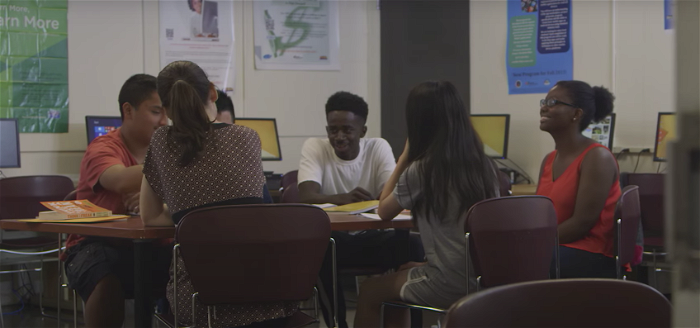October 20, 2021
What It Is
- Secondary-postsecondary integration erases boundaries between K-12 and postsecondary institutions and systems. Aligning curricula, credits, funding, policies, and practices enables more students to advance seamlessly from K-12 to and through higher education.
- Developing pathways is an essential strategy for achieving secondary-postsecondary integration across institutions and systems—and eliminating the barriers that stop many students from entering and succeeding in college.
- College and career pathways include a distinct sequence of high school and college courses, starting in grade 9, that incorporates both rigorous core academics and career-focused learning and leads to a postsecondary credential for a high-demand, high-wage career.
- Career pathways offer substantial college coursework to high school students—for credit and tuition free—through dual enrollment. Alignment to high-wage, high-demand careers in regional labor markets is a core feature of pathway design, which begins with employers identifying in-demand skills and credentials to be incorporated throughout the pathway.
Why It Matters
- Pathways address significant inequity in access to family-supporting careers.
- Many young people, especially students of color and students from low-income households, lack the necessary support to successfully transition from secondary to postsecondary education and complete postsecondary degrees and credentials. This places them at a substantial disadvantage in the job market because most jobs that pay a living wage require postsecondary credentials.
- Research shows that participation in dual enrollment leads to greater educational success—in high school academic achievement, graduation, credit accumulation, and college entry, persistence, and completion. Accruing college credit in high school reduces the amount of time it takes to earn a degree and lowers the cost of college.
- Pathways aligned with labor market demand meet the needs of both students and employers. Students gain skills and credentials that lead to family-supporting careers, while employers expand their talent pipelines.
What It Looks Like
- Pathways expand college and career options for students. They prepare students for a range of postsecondary credentials—including certifications, associate’s degrees, and bachelor’s degrees—while providing opportunities to learn about careers and build in-demand skills.
- Pathways span secondary and postsecondary education, include all requirements for a high school diploma and a postsecondary credential, and have clear structures, timelines, costs, and student requirements.
- Course sequences are designed by K-12 and college partners to ensure what students learn in one course prepares them for the next. Partners also help students meet the demands of college coursework while completing high school graduation requirements.
- The range of available postsecondary credentials embedded in pathways creates easy-to-navigate on-ramps and off-ramps for students, allowing them to compete in the labor market while pursuing further education according to their interests and career goals.
- Students have the opportunity to earn at least 12 college credits for free by taking dual enrollment courses.
What Roles Partners Play
- Secondary and postsecondary educators collaborate on designing career pathways that incorporate dual enrollment opportunities and equip students with skills and knowledge that are in demand in the regional labor market. Educators must also partner to create funding structures, institutional agreements, and policies to support pathway completion.
- Employers and industry associations identify the credentials needed to meet their talent needs and define entry-level professional and technical skills and competencies that are reflected in K-12 and postsecondary curricula.
- Intermediaries support collaboration across secondary and postsecondary education and education and industry, including developing a process that engages both educators and employers in identifying in-demand competencies and updating pathways to meet the needs of evolving regional labor markets.
Related Content

The Big Blur: An Argument for Erasing the Boundaries Between High School, College, and Careers —and Creating One New System That Works for Everyone
This paper argues for a radical restructuring of education for grades 11–14—by erasing the arbitrary dividing line between high school and college—to open opportunities for the learners our current systems leave behind. We make the…

Strategies to Support Young Men of Color in Early College High Schools
Early college high schools are powerful instruments for success for students, especially young men of color. This report outlines strategies to remove systemic barriers to their engagement and provides examples of successful and emerging practices…

Better Connecting Secondary to Postsecondary Education: Lessons and Policy Recommendations from the Great Lakes
This brief offers policy-based solutions and examples that can support greater alignment and partnerships across K-12 and postsecondary education, promote scaling, and, ultimately, ensure that every young person has the support necessary for success. The…

An Intermediary’s Guide to Working with Higher Education Partners
This guide supports intermediaries and their community college partners in forming productive and lasting relationships. The goal of these partnerships is to provide high school students with opportunities to earn college credits that will help…

Recommended Technical and Essential Employability Competencies For College and Career Pathway Endorsements
Learn about the skills, knowledge, and experiences high school graduates in Illinois can use to show they are ready to enter a high-demand industry or pursue higher education. This report outlines technical and professional competencies…

The MOU: A Tool for Formalizing Partnerships
Intermediaries can use memoranda of understanding (MOU) to better fulfill their roles as connectors among partners working to provide college and career pathways. This easy-to-use guide describes the purpose of an MOU, outlines the process…

C-Town Pathways Guides
These guides help high school students strategically navigate and make decisions about their college and career pathways. These guides help high school students strategically navigate and make decisions about their college and career pathways. At…